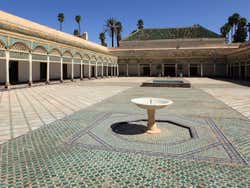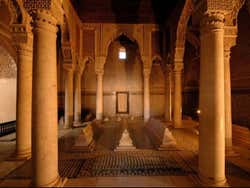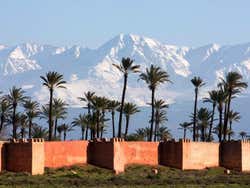
History of Marrakech
Discover the fascinating history of Marrakech (Marrakesh) since it was founded by Yusuf ibn Tashfin, leader of the Moroccan Almoravid empire, up until the present day.
Marrakech was founded in 1062 by Yusuf ibn Tashfin, leader of the Moroccan Almoravid empire. He is also considered one of the most prominent leaders of the country, promoting an Islamic system in the whole country, Muslim Spain and the Maghreb. Marrakech became the capital of the Almoravid dominion.
A new religious movement from the High Atlas called Almohads seized the city of Marrakech from the Almoravid in 1147 and the Almohad Caliph Abd al-Mu’min refused to enter the city because he claimed the mosques in Marrakech were not correctly orientated.
A few years later, Abd al-Mu’min commissioned the construction of two mosques, one is the renowned Koutoubia Mosque, which was inspired by al – Andalus (Andalusian) Islamic architecture. This is why it is very similar to the bell tower of the Seville Cathedral.
In 1230 al-Ma’mun of the new dynasty, the Marinids, captured Marrakech. Shortly after, his brother Abu Yusuf Yaqub forced the Almohads to retreat to the Atlas and the Marinids ruled over Marrakech during the following two centuries. During this period, the city was slightly forgotten as the dynasty moved the capital to Fez.
The dynasty of the Marinids was replaced by the Wattasids and these were expelled by the Sharifian families.
The Sharifs are descendants of the Prophet Muhammed’s cousin Ali and his daughter Fatima. The Alaouite dynasty, which comes from the word Ali is the current Moroccan royal family.
The Saadians made Marrakech their capital during the sixteenth century. The most famous architecture from this period includes the Bab Doukkala Mosque, the Ben Youssef Madrasa built in 1570 and the Saadian Tombs.
Marrakech suffers the same episodes as the rest of Morocco where the Portuguese, the Spaniards and the French attacked the country, sometimes to try and defeat the pirates, sometimes to retaliate for having been too lenient on piracy. But, in general, to control the natural resources and its privileged location as the door to Africa.
There are few periods of peace in Morocco until the country claims its independence in 1956. For centuries, it had been an focus of interest for various European countries, which fought hard to main control over it.
In 1911 the capital was moved to Rabat and Marrakech was made capital of the mid-southwestern region of the country. Presently, the city’s main economy is based on tourism, as well as agricultural products, exported mainly to Europe and its vegetable canned food. It is the region’s commercial centre and where the minerals that are extracted from the Atlas are transported from.



